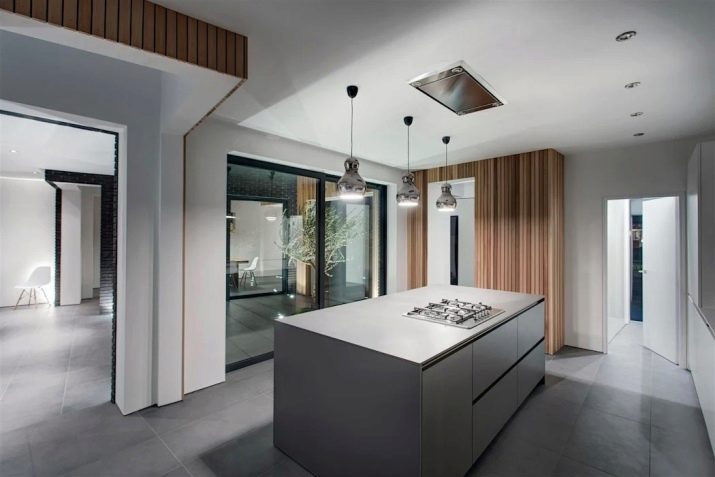Walk-through kitchen design options

A walk-through kitchen is most often found in a private house than in an apartment, but in any case it becomes a problem for the owners. This room can be large or small, narrow or wide. The owners see a huge disadvantage in the fact that such a room with two doors is a passage to another room, which means that the design project should be non-standard. It is very important to create a comfortable space, functional and aesthetic. Despite the difficulties, it is very interesting to shape the interior. There are quite a few options, you need to choose the one that will be optimal for your kitchen.
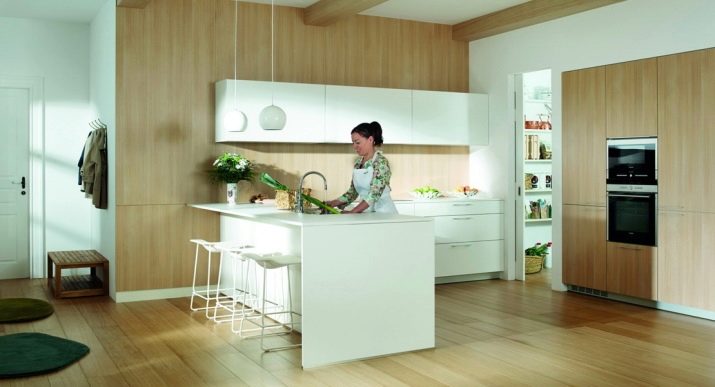
Features of the layout
The most important requirement is that any kitchen must be ergonomic, even a walk-through. Therefore, start thinking over the interior with the location of the main functional areas. Besides, it is necessary to immediately take measurements and decide what is the maximum width and length a kitchen set can have... After that, you can start choosing a style, color, materials. The size of the aisles is of paramount importance in a walk-through area.
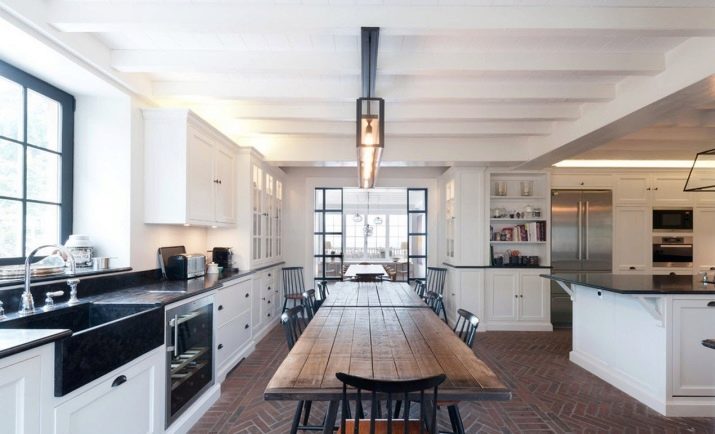

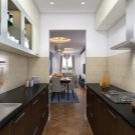
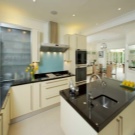
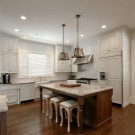
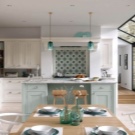
Designers recommend taking into account the following nuances at the planning stage:
- the working area should not be in the aisle and, in general, interfere with movement around the room, otherwise the hostess will be constantly interfered with;
- in the event that the room is large, you can think of an island layout, but only on the border of the zones, not in the center of the aisle, it is also possible to place a bar counter;
- a small room should have a minimum passage of 120 cm, otherwise family members will constantly bump into each other and interfere with the cooking process;
- no furniture, even the most important, should not interfere with freely walking through the kitchen;
- also exclude thresholds, different floor levels, possible communications, wires, cables in the entrance area;
- it is very important to correctly organize the lighting, especially if there is no window in the room, in any case, the working area should have its own light source;
- wardrobes with standard doors are not very convenient in such a room, it is better if they are of the type of a compartment;
- the dining area can be placed only in a fairly large walk-through kitchen, but if the area is modest, it should be moved to the living room or a separate room;
- it is quite possible to equip a small folding table even in the smallest kitchen.
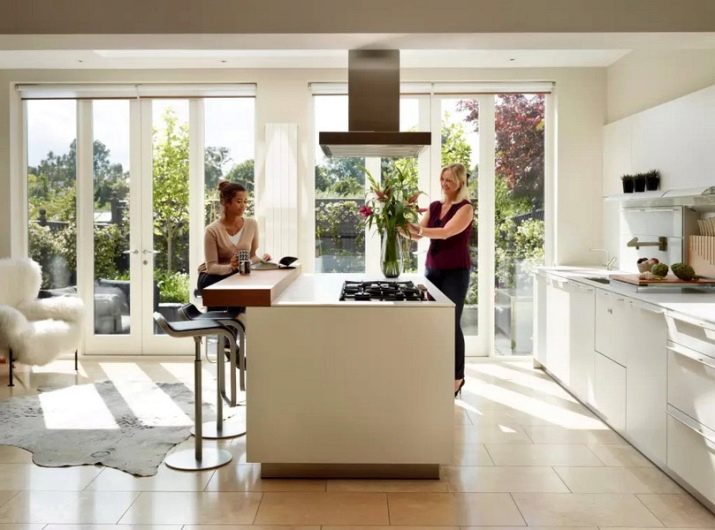
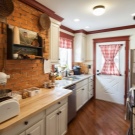
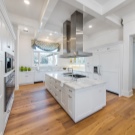
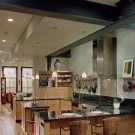
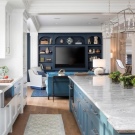
In addition to these techniques, you also need to properly zone the walk-through kitchen. Of course, we are not talking about real partitions, but the visual division into zones is quite real.
Zoning
In order for the functional areas to be separated from each other, but the overall composition is harmonious, a number of design techniques can be used. In the walk-through room, clear zoning of the dining room and work area cannot be done. Visual ways of dividing zones:
- an island in the form of a working area or a bar counter is appropriate only in large rooms, as well as when combining a kitchen and a living room;
- hanging cabinets or pendant lights can be placed above the island;
- since partitions in the walk-through room are undesirable, furniture can be used as such, for example, shelves or cabinets;
- color zoning is not the most time consuming, such a technique will allow not only highlighting zones, but also correcting room imperfections, for example, a kitchen that is too long can be visually "shortened" with color;
- another way to replace the partition is to use thread curtains;
- Even rugs of different prints or colors, correctly positioned, can highlight areas;
- different materials for finishing in different areas.
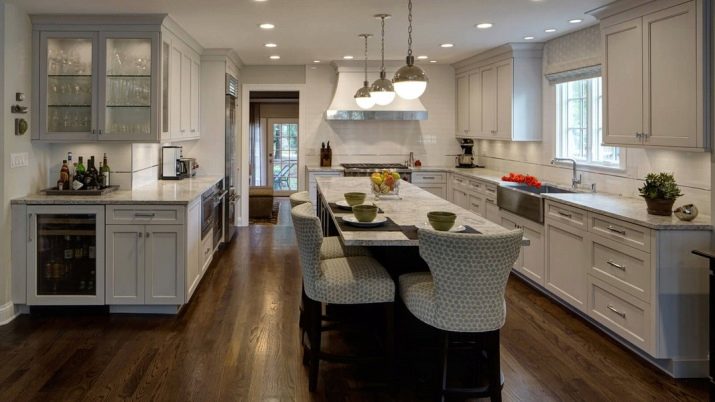
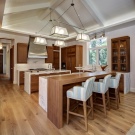


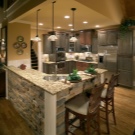

Furniture selection
It is very important to consider not only the size of the room, but also the overall style. In order for the composition to be harmonious and aesthetic, all pieces of furniture, appliances and decor must correspond to the chosen direction. Designers recommend adhering to the following rules:
- it is better to select shades, materials, design of objects so that they look organic with adjacent objects;
- give up the decor, which you can catch on, passing by;
- do not forget about aesthetics, outwardly the furniture should fully correspond to your idea;
- it is better to minimize glass cabinet doors or completely abandon them, opting for closed ones;
- the bar counter in the center of the room must accommodate chairs under it, otherwise they will interfere with the passage;
- choose materials and accessories that are easy to clean, this applies to absolutely all items in the walk-through kitchen, it gets more dirty.
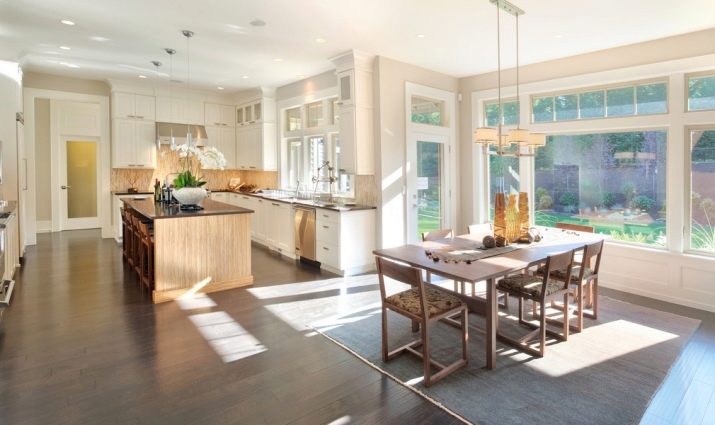
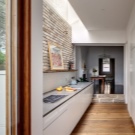
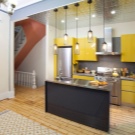
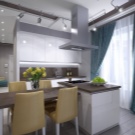
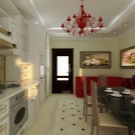
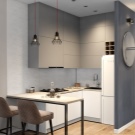
Window-side working area
This is a very original design solution, which many owners of walk-through kitchens are afraid of. However, following the example of Western designers, this method of placement is becoming more and more popular. In this way, you achieve better illumination of the working area, in addition, the view from the window cannot but rejoice in the process of cooking.
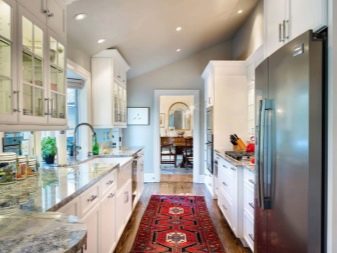
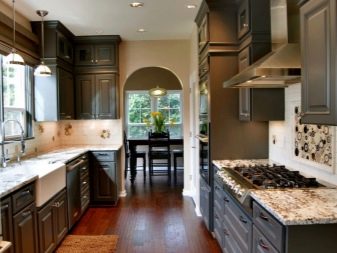
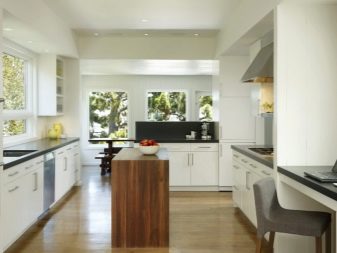
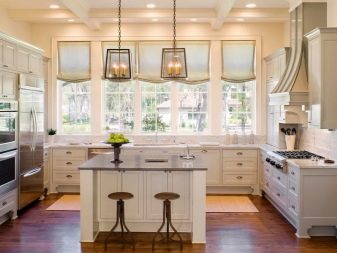
In a private house, such a layout is also convenient because you can observe the yard and children.
First of all, you need to think over the countertop and cabinets in such a way that they do not block the opening. In fact, the window sill is replaced by a table top, and the window merges into the overall structure very organically. We'll have to abandon the curtains, replacing them with blinds, roller and Roman models. Be sure to think about the transfer of heating devices, which in apartments are most often located under the window.




It is possible to install an underfloor heating system if the transfer problem cannot be solved.
Lighting
In a walk-through kitchen, central lighting will not be enough, so a lonely chandelier on the ceiling is the wrong decision.First of all, lighting must penetrate into each zone, while relying only on natural is impossible. In the dark, it will be quite uncomfortable for you to cook, wash dishes or set the table. The entire perimeter of the walk-through kitchen should be under the light of any appliances. The working area is most often illuminated with LED strips or built-in lamps.
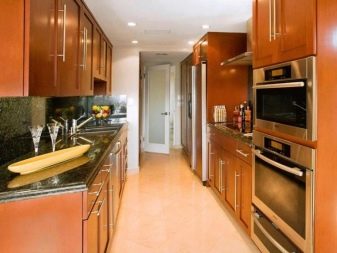
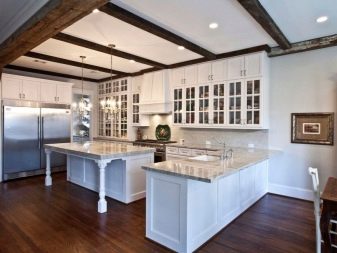
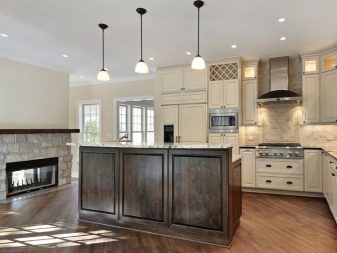
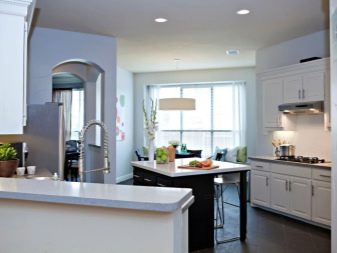
Above the dining area, you can hang a chandelier or ceiling lamp. It is necessary to have a separate light source in the passage for passage in the dark. Light can not only emphasize zoning, but also make the room feel cozy. If the ceilings are not too high, it is best to avoid hanging structures in favor of ceiling lamps.
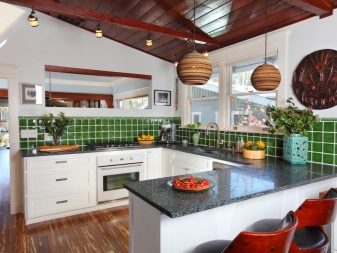
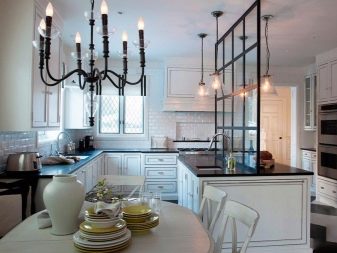
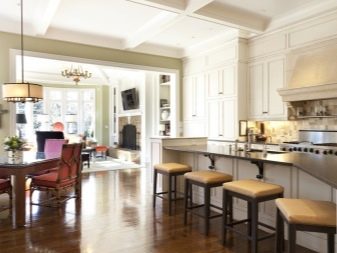
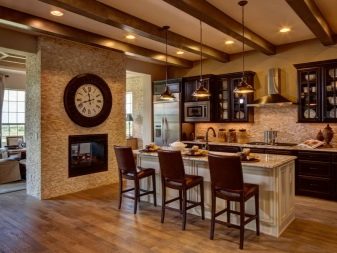
Style, colors, decor
The choice of style for a walk-through kitchen must be chosen taking into account the characteristics of the room, its size. If the room is large, there are very few style restrictions. One should only avoid too luxurious directions, for example, baroque or art deco. An excellent choice for any room size - Provence, country, classic, minimalism. In a small kitchen, laconic styles of minimalist directions - minimalism, hi-tech will look best. Despite its simplicity, a loft requires a lot of space, so it will be inappropriate in a small walk-through kitchen.
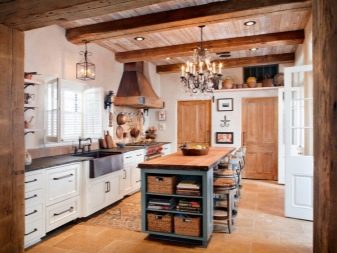

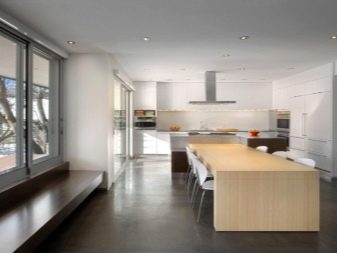
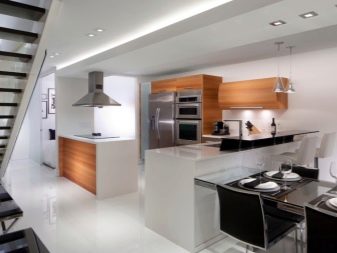
The color scheme is directly related to the size of the room and the style. In a large, bright room, you can safely use contrasting and catchy color schemes; in a small room, it is better to rely on simplicity and light shades. In the latter case, style and color should work to visually increase the space.
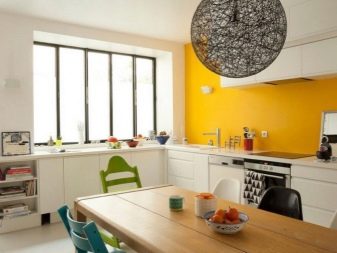
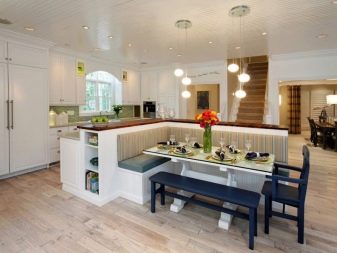
As for the decor, it should be minimal. You should not use objects that will interfere with movement around the room. It is better not to clutter up the walk-through room, even visually. Therefore, stick to the principles of minimalism - this is a win-win option.
